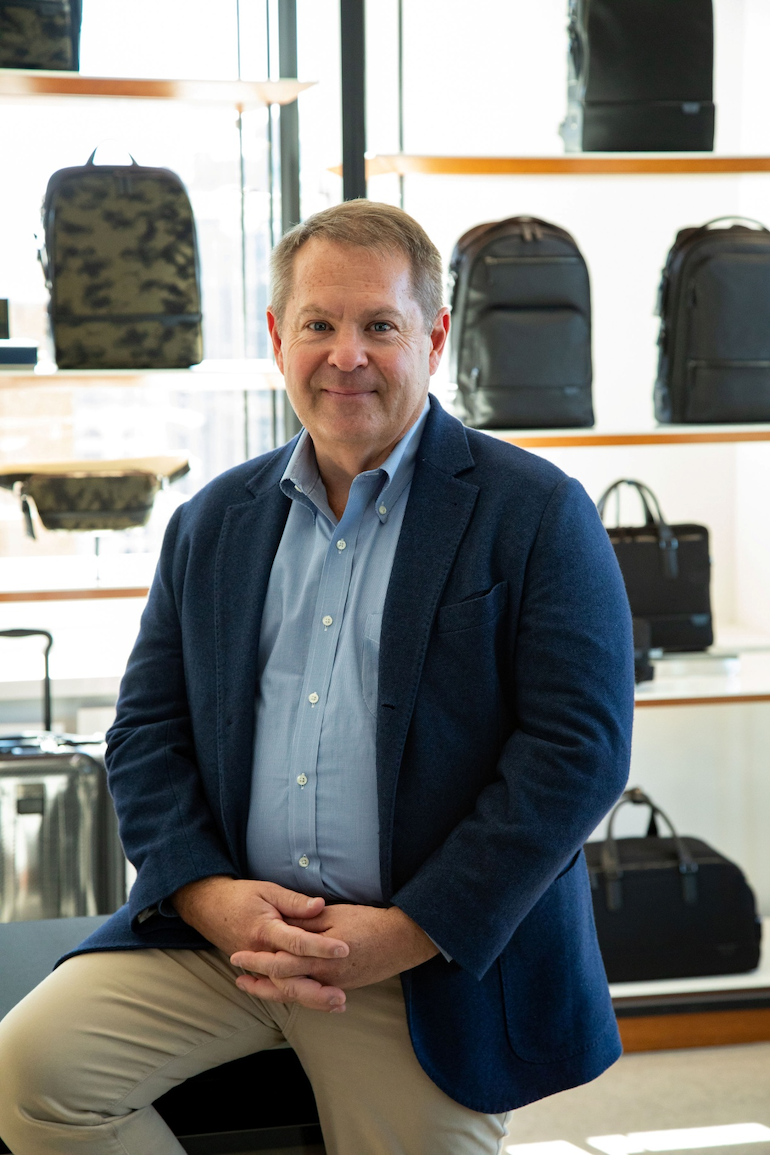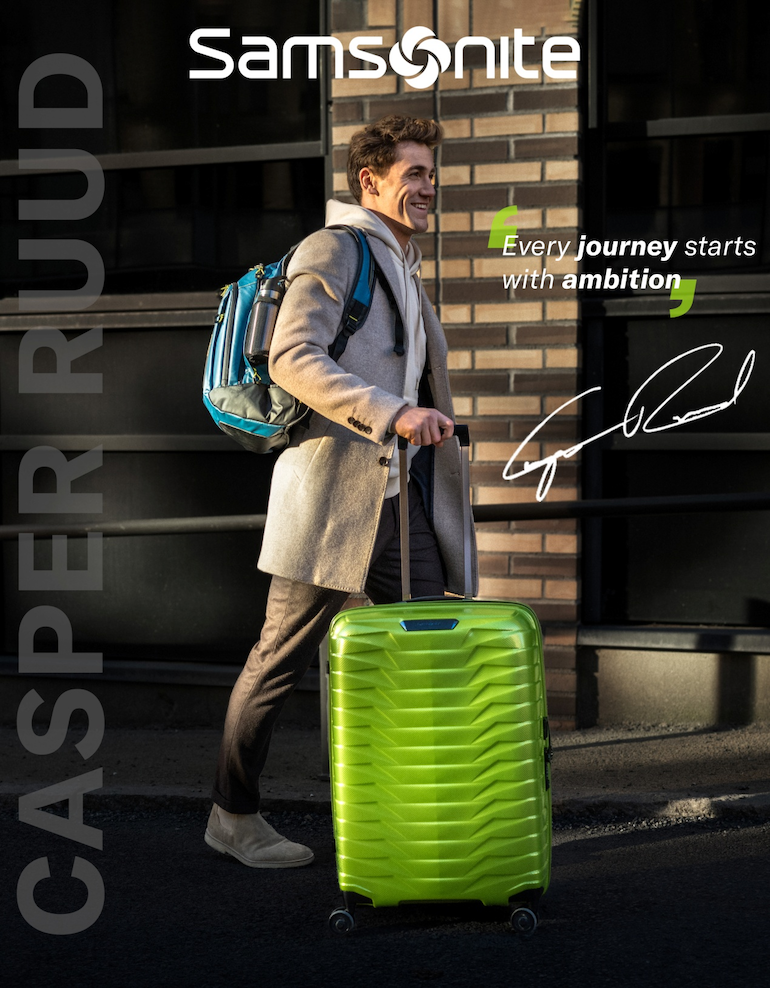 World's Biggest Luggage Maker Samsonite Gains New Momentum in China as Tourism Recovers
World's Biggest Luggage Maker Samsonite Gains New Momentum in China as Tourism Recovers(Yicai) Dec. 13 -- Samsonite International, the world's biggest luggage maker, is gaining new momentum in China, as the local tourism industry is on track for a strong recovery and tourism-related consumption booms.
China's total retail sales of consumer goods rose 6.8 percent year-on-year in the first nine months of 2023 thanks to improved consumer sentiment according to data from the National Bureau of Statistics. Tourism-related spending experienced rapid recovery, and total revenue from domestic tourism nearly doubled to CNY2.3 trillion (USD314 billion) in the first half of the year. Some 826 million trips were made in Mainland China during the eight-day Mid-Autumn Festival and National Day holiday.
Samsonite, which has put down deep roots in China over many years of development, also achieved impressive results this year, as recovery in long-haul travel remains on track, travel and tourism related industries are experiencing positive momentum.
During the first nine months of 2023, Samsonite's sales jumped 32.6 percent to USD2.73 billion from a year earlier. Sales from the Asian market, which includes China, soared 62.2 percent to USD1.07 billion. This continues the company's strong performance in 2022, when its net sales rose 42.5 percent year-on-year to USD2.88 billion, while revenue from the Asian market grew 33.3 percent to USD916 million.
Samsonite's Chief Executive Officer Kyle Gendreau expressed strong confidence about the future of the Chinese market and shared his views on the company's digitization and sustainable development initiatives during an interview with Yicai.

China as Key Market
As one of the most populous countries in the world with consumers aspiring for higher-quality travel experiences, China recorded an above-average performance during Covid-19 and saw demand for both domestic and overseas travel rebound after easing pandemic prevention and control policies. This gave Samsonite confidence about the Chinese market.
"Chinese consumers are excellent international travelers, as they are passionate about interacting with the world," said Mr. Gendreau. "Over the past few years, Chinese people mainly traveled domestically, but once they return to outbound tourism, they will drive the growth of the whole international travel market," he added.
Samsonite's CNY net sales in China rose 88.3 percent year-on-year in the first nine months of 2023, and 4.9 percent above the same period in 2019 before the pandemic. "I expect net sales in China to maintain steady growth in the remainder of the year, and for 2023 full year sales to continue to increase compared to 2019," Mr. Gendreau commented, noting that the outlook for China's tourism industry and Samsonite are expected to remain bright in 2024.
Multi-Brand Strategy
In the increasingly competitive Chinese luggage market, similar to the fashion, cosmetics, and dining industries, Samsonite has implemented a multi-brand strategy to target the specific needs of different consumer groups, and through strengthening each brand's distinctive image to accelerate the company's penetration into the Chinese market.
Besides its main brand Samsonite, the company has introduced several brands, including TUMI and American Tourister, to the Chinese market, covering various usage scenarios and applications to meet the diverse demands of consumers, and provide comprehensive brand coverage in the realm of travel and lifestyle.

Moreover, Samsonite is steadily expanding its product categories to meet Chinese travelers' needs beyond luggage, including backpacks, briefcases, and shoulder bags for daily commuting, providing them with a more extensive range of choices and genuinely engaging their daily lives.
About the preferences in fabrics, designs, and colors among consumers in different regions, Mr. Gendreau commented that Samsonite's design team has the ability to tailor their products according to market needs, meeting the varied demand from the markets around the world with specific products for local markets, including the Chinese one.
Mr. Gendreau also observed that young people everywhere are eager to travel and experience the world, and leisure travel by young Chinese consumers is rising quickly. He expects that the younger generation's travel and consumption demand will continue to see robust growth. As a result, Samsonite will continue to implement a multi-brand strategy in China to cater to the wide-ranging expectations of consumers.
Emerging Forces
Samsonite consistently invests in strengthening its digital presence to enhance its consumer reach and drive growth. It has adopted Chinese mobile channels like WeChat mini-programs and short video platforms like WeChat Videos as they have become some of China's main e-commerce sales channels, and livestreaming and social media platforms have become the way through which young people increasingly learn about brands and products. Through these channels, Samsonite develops differentiated marketing campaigns for its products to target and meet the diverse demands of various groups of customers.
Samsonite also accelerated the upgrade of its brick-and-mortar stores in China, transforming them into spaces for efficient communication and interaction with consumers, thereby achieving synergy with online sales. The firm has stores in more than 170 large- and medium-sized Chinese cities, with over 800 points of sale in high-end department stores, shopping malls, and airports.
One of Samsonite's long-term competitive advantages is its ability to provide services to customers through any channel they wish to shop from, Mr. Gendreau explained. Moreover, its scale advantage allows the company to make significant marketing investments to enhance brand awareness.
Samsonite conveys information to Chinese consumers through new media content creation, intellectual property collaborations, and celebrity endorsements, like that with famous soccer player Cristiano Ronaldo, providing a powerful and consistent brand message online and offline.
It is through intensifying digital marketing that has brought Samsonite closer to consumers, helping it achieve a leading position in the travel luggage industry, according to Mr. Gendreau. Embracing digital marketing and livestreaming also enabled Samsonite to engage with the younger generation.

Consumption has undergone intergenerational changes, and young people are more willing to experience new things and services and improve their lives, Mr. Gendreau noted. This means that Samsonite needs to provide them with more value in terms of experience.
Samsonite will further expand its presence in second- and third-tier cities. At the same time, Samsonite will continue to strengthen its supply chain in China by leveraging its local sourcing advantages, promote deep and long-term cooperative relationships with Chinese suppliers, and further improve product supply and quality.
Being Responsible
With the vision to become the world's most sustainable lifestyle bag and travel luggage company, Samsonite launched a comprehensive sustainability strategy called Our Responsible Journey in 2020 and re-framed the strategy last year to focus on three pillars: products, planet, and people.
Samsonite adheres to the principles of circular economy, continuously creating more sustainable products. In 2022, products with recycled materials account for more than 23 percent of Samsonite's sales revenue, and the figure is expected to increase in future years.
Three of Samsonite's top 10 best-selling product collections were among its most sustainable last year, containing at least 40 percent recycled materials by weight, such as RecyclexTM, a fabric made from 100 percent post-consumer recycled polyethylene terephthalate bottles.

For example, Samsonite's ProxisTM set a new industry standard by introducing the revolutionary RoxkinTM material in its hard-shell suitcases. This patented material offers remarkable resilience, ensuring that the suitcase easily reverts to its original shape, even after enduring rigorous travel. Not only does it provide exceptional protection, but it also keeps the suitcase incredibly lightweight for easy portability. In addition, ProxisTM customers can take advantage of Samsonite's unique WeCare service plan, which allows them to contribute to a circular economy by returning their suitcases to Samsonite at the end of their life cycle for recycling.
Aiming to lead the sustainable transformation of the bag and travel luggage sector, Samsonite is also committed to powering operations with 100 percent renewable electricity and achieving carbon neutrality for its operations by 2025.
In addition to investing in the research and development of innovative and more sustainable materials for its products, Samsonite launched a four-part diversity and inclusion strategy. In the company’s 2022 global employee survey, 90 percent of the respondents had a positive attitude toward Samsonite's diversity and inclusion efforts.
Meanwhile, the company is committed to maintaining gender balance among all employees and aims to achieve gender balance in senior positions by 2030, with at least 45% of management team members at the director level or above being women.
To accelerate the progress on Our Responsible Journey and further embed sustainability into its organizational culture, Samsonite established a Global Sustainability Council to enable strategic coordination and alignment and drive accountability across the company.
Mr. Gendreau believes that through its commitment to sustainable development and scale advantage, Samsonite will change the rules of the game in the next five years, leading the sustainable transformation of the bag and travel luggage as consumers’ consumption attitudes.
Samsonite, a leader in the industry for over a century, has built a strong presence in China for over two decades. The company has continually adapted to the evolving Chinese market, aligning itself with the country's economic landscape, and consistently delivered value across various facets, from performance and function for consumers to sustainable development.
Editor: Futura Costaglione